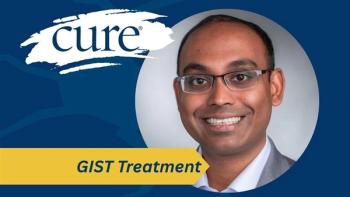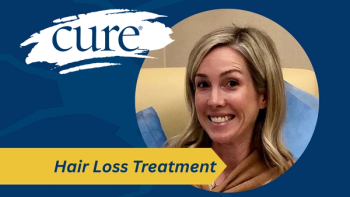
Patient-Reported Tool Highlights the Role of Nutrition in Overall Health for Geriatric Patients with Cancer
To gain a better understanding of the issues faced by geriatric patients with cancer, and to determine how much of a role nutrition plays in outcomes, Dr. Grant Williams, a geriatrician oncologist and assistant professor at the University of Alabama, Birmingham, worked with colleagues to create a patient-reported assessment tool that bridges the knowledge gap in this patient population.
To gain a better understanding of the issues faced by geriatric patients with cancer, and to determine how much of a role nutrition plays in outcomes, Dr. Grant Williams, a geriatrician oncologist and assistant professor at the University of Alabama, Birmingham, worked with colleagues to create a patient-reported assessment tool that bridges the knowledge gap in this patient population.
In an interview with CURE®, Williams gave an overview of what the tool – called the Cancer and Aging Resilience Evaluation survey – is comprised of, and what he and his colleagues discovered when they analyzed the data it collected.
Transcription:
CURE®: Can you tell us a bit about the Cancer and Aging Resilience Evaluation Survey?
Williams: So, our tool specifically is called the Cancer and Aging Resilience Evaluation survey. And it's really a patient-reported tool, meaning it's a sheet of paper that patients get, and they fill out questions about their overall health. And this purposely varies across multiple facets of health, from falls, physical function and functional status, to nutrition, which is what we specifically are talking about here. Hearing, vision, other comorbid conditions (are also included). We actually have financial distress, social activities, anxiety, depression, cognitive function… it's got a lot.
And basically, there's been consensus work done across people like myself, who are geriatric oncologists, and there are specific domains of health that are needed to be assessed for quality care in this population. And we've included all of those.
And then they basically fill this out when they're being seen for the first time here in the clinic, and then that's provided to the clinical team to look at and to utilize.
What did you find when using this tool in the geriatric patient population?
I think it there's kind of different … layers to it. So overall, using this very specific nutritional measure, we did find that about half of older adults with GI (gastrointestinal) malignancies did have malnutrition using this measure.
We didn't see (that) it was very related to age, race or gender, or those things. But we did find the more aggressive cancers like the pancreatic cancer, and more advanced stages, were at higher risk of malnutrition. And then we also found, although cross-sectionally, that patients that had malnutrition did have a whole array of other bad things that we don't want, including falls, higher rates of frailty, emergency room and hospitalizations, more comorbid conditions, basically everything we looked at, it's easier to say which was not associated. Polypharmacy and I believe vision were the two things that we did not see significant associations. Otherwise, malnutrition was associated with all of these other adverse measures, including reduced amounts of physical and mental quality of life.
So, although I will say, being a researcher, anything cross-sectionally, you have to know your limitations. And it does not mean that there's a causal relationship here. But I think it definitely shows you it rises to a level of concern, and shows you that, I think, even after controlling for some of the factors we control for, there were these strong associations. And given that this is a targetable thing, you know, we should be further examining those interventions in this population.
How do these findings impact patients?
I think we just need to, even though this isn't completely conclusive, given the design of the study, patients that are losing weight and are having or are at risk of malnutrition, or are at risk of a lot of other adverse outcomes, such as these falls and frailty — not only should we be intervening on these populations, but we really should be closely evaluating them, because they're clearly at-risk individuals that have these signs and symptoms. And to me, I think that's, in large part, my takeaway from a lot of this.
For more news on cancer updates, research and education, don’t forget to





